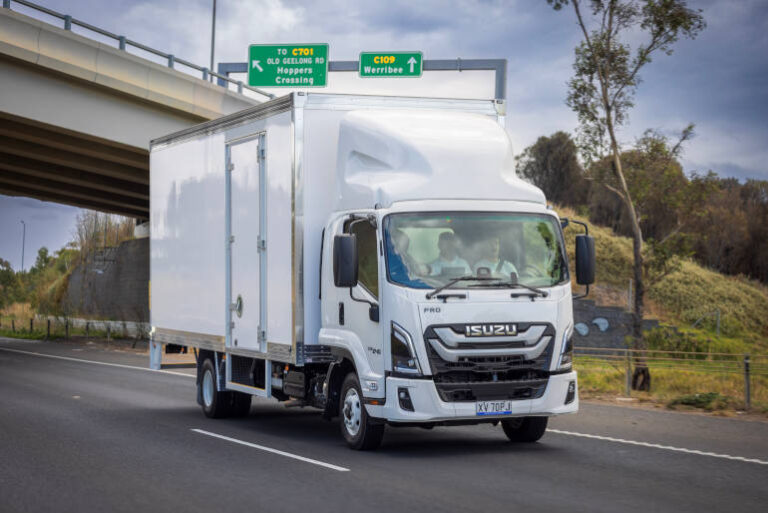In 2025, Isuzu Trucks is rolling out an entirely new N and F Series line-up across Australia — and one of the biggest reasons for the change is the introduction of new emissions standards under Australian Design Rules (ADRs).
The new ADR 80/04 regulations require almost every new truck sold in Australia to meet tighter emissions limits. To comply, manufacturers must meet equivalent standards from Europe, the United States, or Japan, with significantly lower levels of nitrogen oxide (NOx) and particulate matter.
For Isuzu, this was not a case of minor changes or retrofitting existing models. The new standards prompted a complete rethink of engines, emissions systems, and supporting technologies across the light- and medium-duty ranges.
A New Approach to Engine Technology
The 2025 N Series trucks introduce the all-new 4JZ1 engine, a three-litre diesel unit that replaces the previous generation 4JJ1 engine. While smaller in displacement, the 4JZ1 delivers more power and torque, with a focus on improved fuel efficiency and reduced emissions.
To meet ADR 80/04, the new engines now adopt AdBlue Selective Catalytic Reduction (SCR) technology alongside Diesel Particulate Diffusers (DPD). This marks the first time that Isuzu Trucks in Australia have incorporated AdBlue systems into their light- and medium-duty models.
During the media briefing, Isuzu’s product team explained that although SCR technology has been used overseas in Isuzu trucks for more than a decade, it is only now being introduced locally to meet Australia’s new requirements.
In the medium-duty F Series, Isuzu has gone even further. A completely new six-cylinder engine, known as the DB6A, has been introduced. This engine was co-developed with Cummins but is manufactured in Isuzu’s Tochigi Plant in Japan with Isuzu’s own engine control systems.
The DB6A engine eliminates the need for Exhaust Gas Recirculation (EGR), improving combustion efficiency, lowering maintenance demands, and helping trucks meet emissions standards using just SCR and DPD technology.
Isuzu has also revised fuel and AdBlue tank sizes to support long operating ranges, targeting a refill ratio of three to four fuel fills for every AdBlue refill — keeping downtime to a minimum for operators.
More Than Just Emissions
The introduction of ADR 80/04 also coincides with new mandatory safety requirements, including stability control and autonomous emergency braking on most vehicle categories.
Rather than simply complying, Isuzu has taken the opportunity to integrate a broad range of new safety features across its 2025 line-up — including lane departure warning, intersection warning systems, and adaptive cruise control — ensuring that trucks are safer, smarter, and ready for the future.
Building for the Future
The move to new emissions systems has had a major impact beyond the engine bay. New chassis designs, exhaust after-treatment packaging, and electronic control modules have been introduced to support the added complexity, while still maintaining flexibility for body builders and fleet customisation.
With these changes, Isuzu has not just met the new Australian standards — it has completely refreshed its light- and medium-duty range, delivering trucks that are cleaner, safer, and more efficient for years to come.






